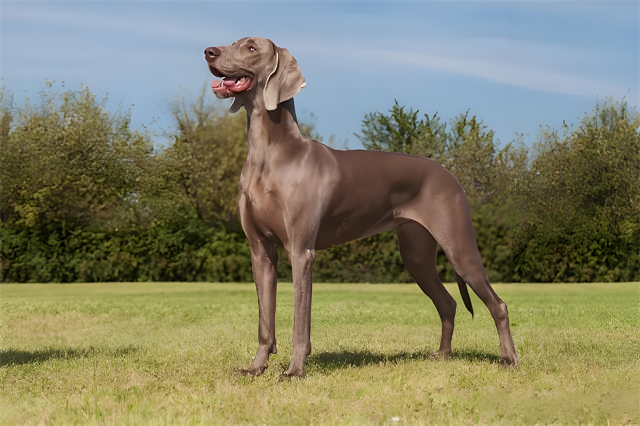The Weimaraner, often called the "Gray Ghost" for its sleek silver-gray coat and stealthy hunting prowess, is a versatile and intelligent breed beloved by dog enthusiasts worldwide.
 Article source:https://www.petwoah.com/pet Site-https://www.petwoah.com/475.html
Article source:https://www.petwoah.com/pet Site-https://www.petwoah.com/475.html
Originating in Germany, this athletic dog combines elegance with endurance, making it a standout companion for active families and outdoor adventurers.Article source:https://www.petwoah.com/Pet Site-https://www.petwoah.com/475.html
History and Origin of the Weimaraner
Developed in the early 19th century, the Weimaraner was bred by German nobility to hunt large game like boar, deer, and bears.Article source:https://www.petwoah.com/Pet Site-https://www.petwoah.com/475.html
As hunting practices evolved, the breed adapted to become a skilled pointer and retriever. Its name derives from the Grand Duke of Weimar, Karl August, who championed the breed’s development. The Weimaraner’s unique coat and striking amber or blue-gray eyes reflect its aristocratic heritage.Article source:https://www.petwoah.com/Pet Site-https://www.petwoah.com/475.html
Physical Characteristics
The Weimaraner is instantly recognizable for its:Article source:https://www.petwoah.com/Pet Site-https://www.petwoah.com/475.html
- Coat: Short, smooth, and ranging from mouse-gray to silver.
- Build: Muscular and lean, standing 23–27 inches tall.
- Eyes: Piercing shades of blue (in puppies) transitioning to amber or gray.
This breed’s athletic frame enables agility and speed, ideal for fieldwork or canine sports.Article source:https://www.petwoah.com/Pet Site-https://www.petwoah.com/475.html
Temperament and Family Compatibility
Known for loyalty and affection, the Weimaraner thrives in active households. Key traits include:Article source:https://www.petwoah.com/Pet Site-https://www.petwoah.com/475.html
- High Energy: Requires daily exercise (e.g., running, hiking, or fetch).
- Intelligence: Excels in obedience training but needs mental stimulation.
- Social Nature: Bonds closely with families; may develop separation anxiety if left alone.
Early socialization is crucial to curb their strong prey drive and ensure compatibility with children or other pets.Article source:https://www.petwoah.com/Pet Site-https://www.petwoah.com/475.html
Training and Exercise Needs
The Weimaraner’s working-dog heritage demands consistent training and physical activity. Tips for success:Article source:https://www.petwoah.com/Pet Site-https://www.petwoah.com/475.html
1. Use positive reinforcement to harness their eagerness to please.Article source:https://www.petwoah.com/Pet Site-https://www.petwoah.com/475.html
2. Incorporate puzzle toys or scent games for mental challenges.
3. Aim for 60–90 minutes of vigorous exercise daily.
Without proper outlets, this breed may resort to destructive behaviors like chewing or digging.
Health and Lifespan
A healthy Weimaraner typically lives 10–13 years. Common health considerations include:
- Hip Dysplasia: Regular vet check-ups and joint supplements can help.
- Bloat (GDV): Feed smaller meals and avoid vigorous activity after eating.
- Skin Allergies: Monitor for irritation and maintain a balanced diet.
Routine grooming—brushing weekly and nail trimming—keeps their coat shiny and reduces shedding.
FAQs About the Weimaraner
- Q: Are Weimaraners good apartment dogs?
- A: They adapt to apartments if exercised rigorously but thrive best in homes with yards.
- Q: Do Weimaraners shed heavily?
- A: Their short coat sheds minimally but requires occasional brushing.
- Q: Are they suitable for first-time dog owners?
- A: Their high energy and need for training may challenge novices. Experienced owners are ideal.
The Weimaraner is more than a striking sight—it’s a devoted, energetic partner for those who match its vitality. Whether as a hunting companion, agility competitor, or family pet, this "Gray Ghost" rewards dedicated owners with unwavering loyalty and endless adventures. By meeting their physical and mental needs, you’ll unlock the full potential of this remarkable breed.

